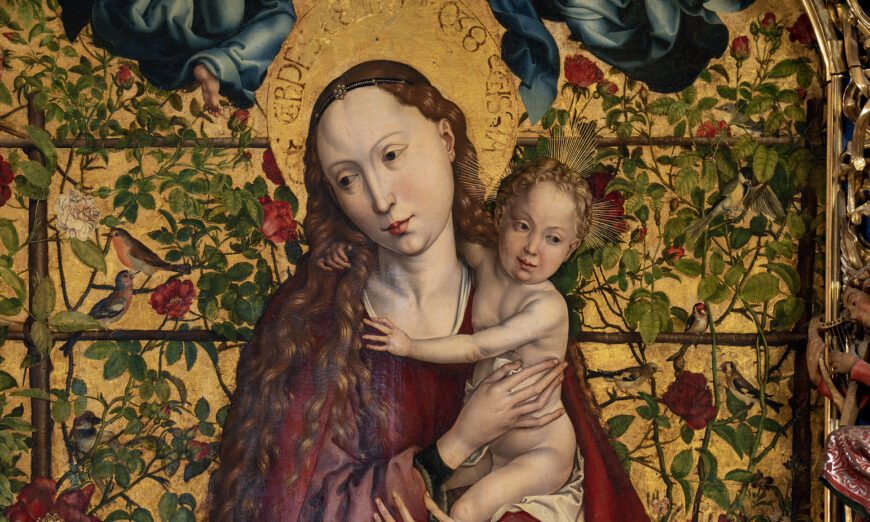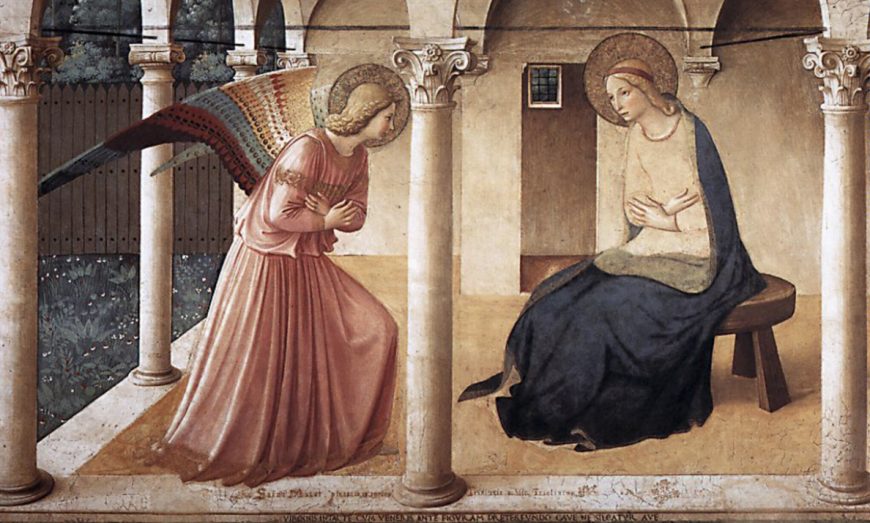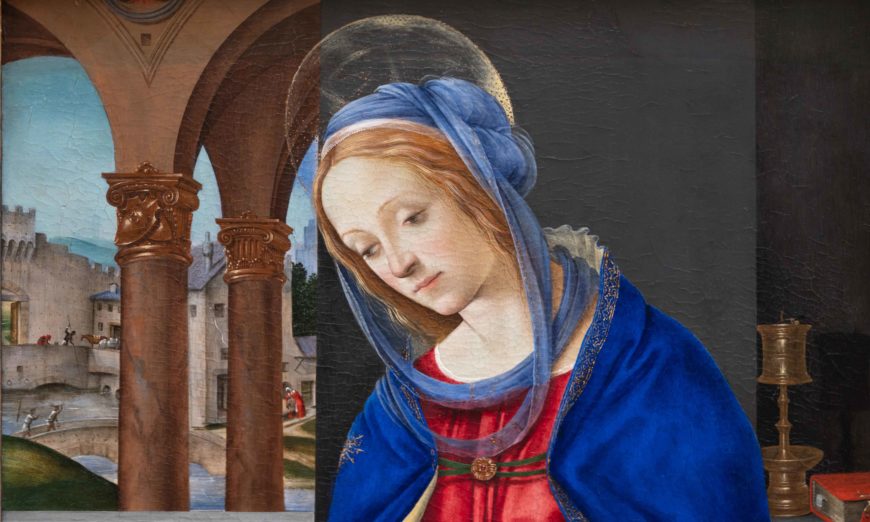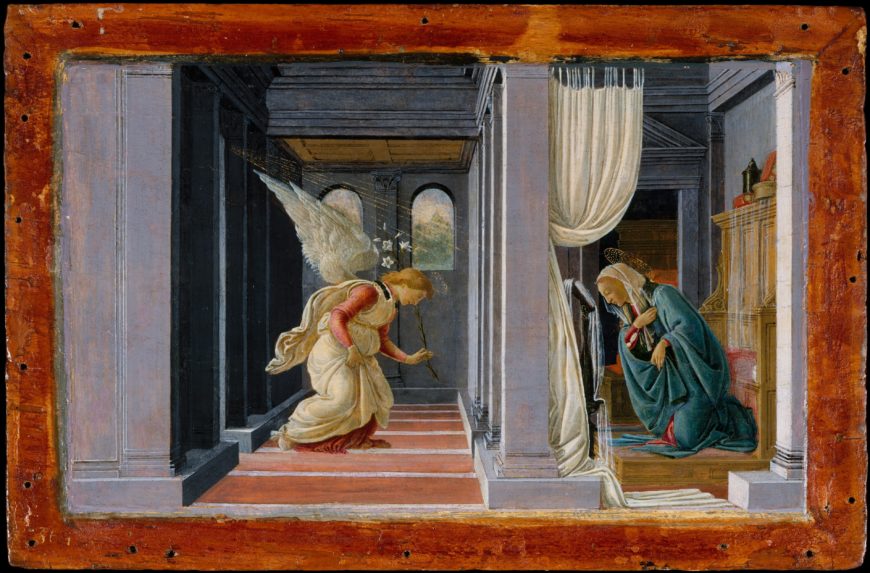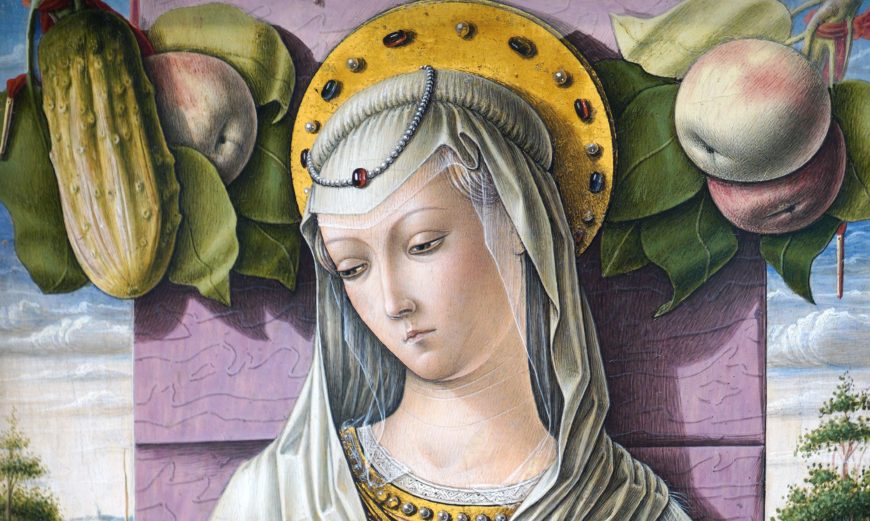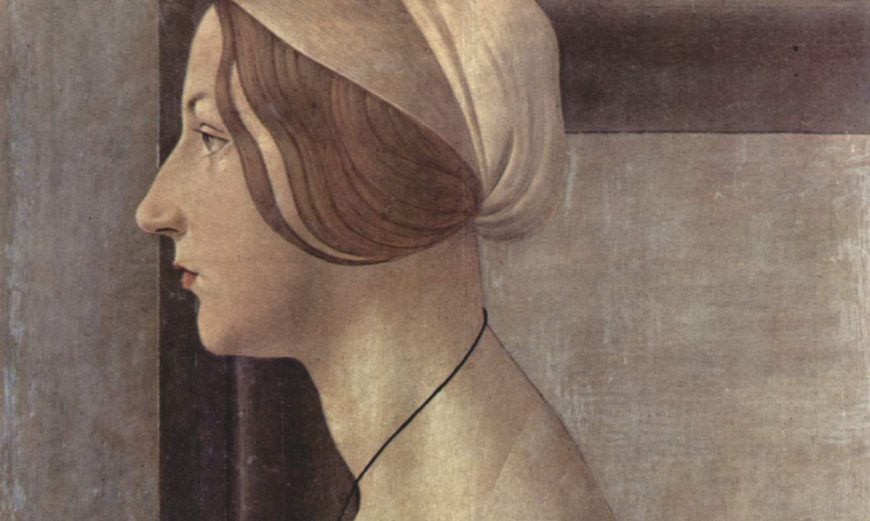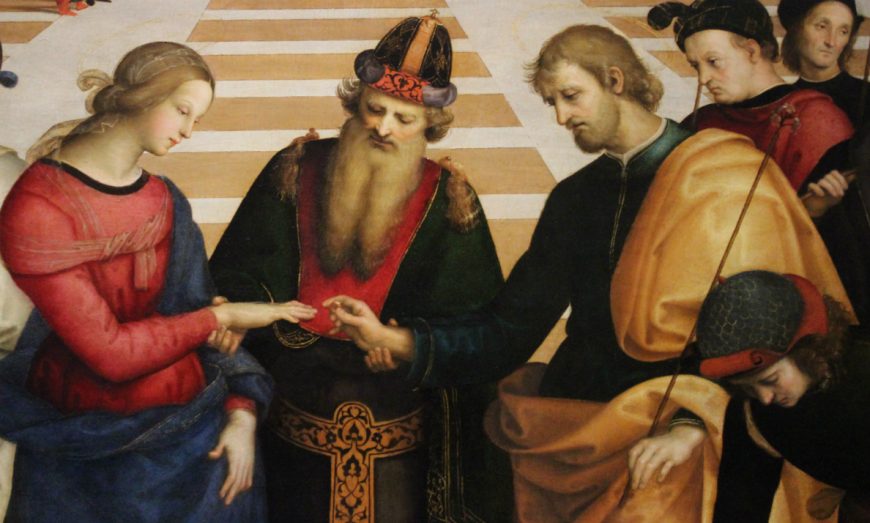Francesco di Giorgio Martini (attributed), Architectural Veduta, c. 1490, oil on poplar, 131 x 233 cm (Gemäldegalerie, Staatliche Museen zu Berlin)
Dr. Steven Zucker: [0:00] Cities are chaos, and it has led people from ancient times to the present to imagine what the ideal city might look like.
[0:00] We’re in the Gemäldegalerie in Berlin, and we’re looking at one image of an ideal city by Francesco di Giorgio.
[0:00] This is a panel that may have originally been part of a piece of furniture, or perhaps embedded within the frame of a wall. It was probably not meant to be an individual work of art.
Dr. Beth Harris: [0:00] You can see the incredible illusion of space that the linear perspective creates, and the intense rationalism that we know was so important to the Renaissance here applied to an image of a city.
Dr. Zucker: [0:00] The ancient Romans had planned their cities as garrisons. They were formed out of a grid, sometimes a rectangle, sometimes a square, but they were rational and they were meant to be rational.
[1:00] But during the medieval period, the thousand years that followed, cities grew organically. They became complex and did not facilitate the movement of people or goods.
[1:03] And so one can imagine now, in this revival of the classical, in the Renaissance, this idea of returning to a kind of geometric purity. What would that city be like, and how might it affect its culture?
[1:16] How might a city that was geometrically perfect, that was ideal, affect those that lived within the confines of it?
Dr. Harris: [1:23] If you think about the Italian city-states and new notions of being a citizen of a republic and rising to the virtues of living in a republic, then we could indeed see how artists of the Renaissance would try to imagine what kind of city space would foster an ideal citizen.
Dr. Zucker: [1:45] It makes so much sense, because the medieval feudal tradition had been a kind of organic system, but now people were taking responsibility for the development and planning of government. Why not also take responsibility for the planning of their civic spaces?
[1:59] In places like Florence, there were squares that were cleared very consciously, so that you had ideal vistas, you had ideal views. And so this notion of urban planning was one that was developing and was very much at the forefront.
Dr. Harris: [2:12] Artists like Leonardo da Vinci is applying that geometry to the form of the body.
Dr. Zucker: [2:18] Exactly. One might think of the “Vitruvius Man,” where you actually have this beautiful coming together of perfect geometry and the ideal human form, a man of perfect proportions.
[2:30] You mentioned earlier the severe linear perspective. It’s so seductive, the way in which our eyes rocket back into space towards those ships.
[2:39] I’m really taken with the playful element. That is, we can see where the vanishing point would be, but very close to it but not quite there is a ship. There’s a dot, and we expect that to be the vanishing point, but it’s not.
[2:52] And we’re reminded that outside of the built environment, on the sea, in the water, these rules don’t apply. The idea of the rational is the idea of the man-made. This is a space that we can control.
Dr. Harris: [3:05] So what we’re seeing here is a coming together of a Renaissance interest in illusionary space, in the architecture of classical antiquity, and in notions of the ideal.
Dr. Zucker: [3:17] That’s right. This ennobling idea of the rational.
[3:19] [music]




